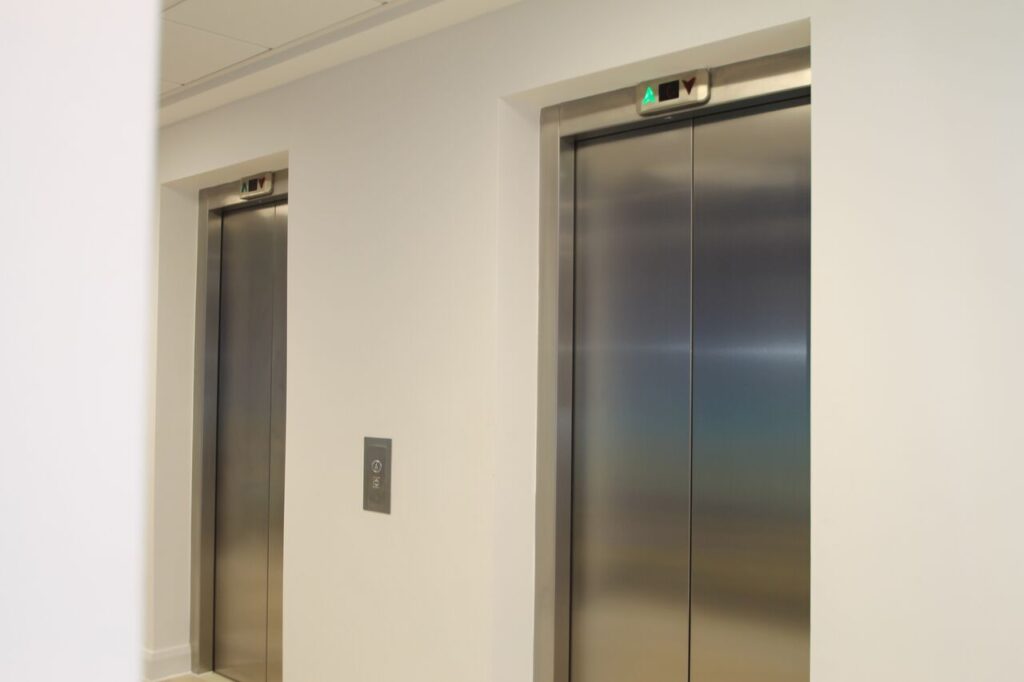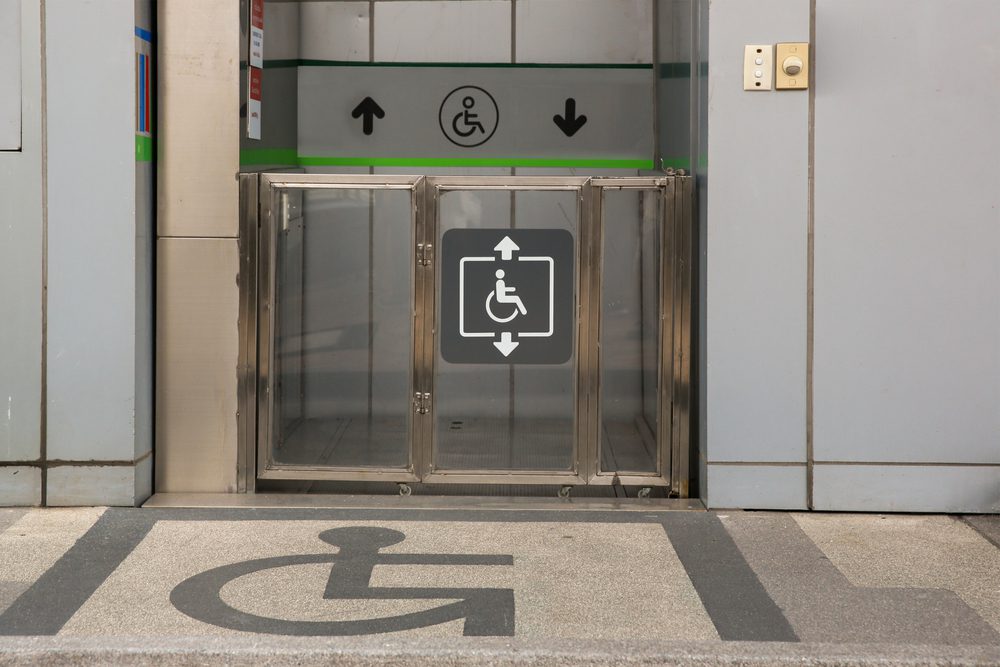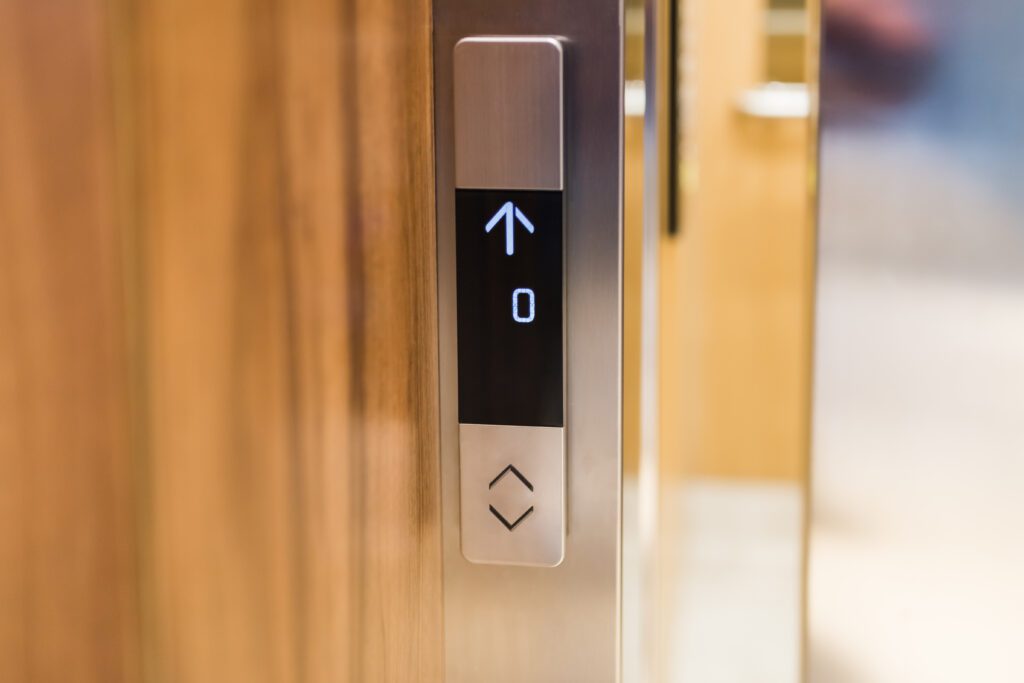If you are eager to ensure that people or items — or, for that matter, both — can be transported quickly and easily between floors of your residential, commercial or industrial property, choosing a lift is the obvious choice. However, finding the perfect lift for your building can be fiendishly tricky.
One simple reason why is the huge range of lifts you can choose from, potentially leaving you paralysed by the ‘paradox of choice’. However, as a long-established company specialising in designing and installing lifts in the UK, we can help you to make the right decision.

What Buildings Need a Lift?
You could be tempted to think you don’t really need to have a lift fitted at your property if it already has plenty of stairs. However, in practice, lifts can be utterly essential in many different kinds of buildings — and UK legislation is a big factor in this.
The Equality Act 2010 states that, if someone with mobility issues is at a major disadvantage when using your building, you have the legal duty — as its owner or manager — to make ‘reasonable adjustments’ to rectify this situation.
The perfect lift, once fully installed and operational, should have all of the necessary features for increasing the comfort level of the people for whom the lift is intended. Exactly what those features are depends on the kind of building where the lift is installed.
Commercial Lifts
Napoleon Bonaparte is reputed to have called Britain ‘a nation of shopkeepers’ — and, regardless of whether he actually did, it would be fair to describe the UK retail trade as a major asset to the national economy today.
To quote one of Napoleon’s vanquishers, Vice-Admiral Horatio Nelson, ‘England expects that every man will do his duty’ — and we have done ours by installing commercial lifts at shopping centres and supermarkets around the UK.
Whether you run a shopping centre, an independent shop or something in between, we could provide you with a lift that would be genuinely useful for your employees, customers or perhaps even both.
One good case in point would be that of service lifts, which enable businesses to swiftly transport goods that would be risky to lift manually. A dumbwaiter lift is one type of service lift, and could be especially convenient for your shopping centre if it houses a restaurant.
While aesthetic concerns might be secondary to practical ones when you are choosing a lift, you could nonetheless benefit from having a glass lift fitted if you are responsible for a luxury shopping centre. The glass would look classy, and can also guard against claustrophobia.
A glass lift would also bode well for the users’ safety, as it would not be possible for any harm to be inflicted in the lift without this incident being visible from the outside.
Residential Lifts
You might never have previously considered having a lift installed in your private residence. However, if you have disabilities or mobility issues, a home lift can help you to remain independent in your own home, as you would be able to reach each level of it by yourself.
Of course, these days, many organisations run domestic sites — such as apartment buildings and care homes — where multiple different people live. In a building like these, a newly installed lift can particularly come into its own, time-effectively transporting residents between storeys.
Keeping in mind how often this lift will inevitably be used, it is crucial that a residential lift is frequently checked both during and after installation. Fortunately, our project manager and trained engineers know how to make sure residential lifts are installed with accessibility at the forefront.
Naturally, it would be ideal if the lift — including its car ceiling, walls and flooring — matched or complemented the building’s wider decor. Our project team can discuss this subject with you before drawing up a bespoke design for your residential lift.
A glass lift can give a hotel an extra touch of luxury. If you run a five-star hotel or a set of high-end apartments, you can give it a fitting centrepiece by opting for one of the scenic lifts we offer — which include curved glass, glass-bottom and panoramic lifts.
Industrial Lifts
We know that, when choosing a lift for industrial applications, you could have a long list of criteria this unit would need to meet. For example, it could be vital for the lift to be able to withstand the significant weight of heavy loads you would need transporting from one level to another.
We can build you a platform lift that would satisfy this brief and enable goods to be transported time efficiently without you needing to pose the safety risk of lugging those items up stairs.
Needless to say, high durability is also imperative in an industrial lift, which is why every such lift we provide has been built to be heavy-duty and remain resilient with frequent use.
Choosing a lift can be arduous if you are unsure what materials your lift of choice ought to have. However, we spare our industrial clients much indecisiveness on this particular score — as, working with suppliers, we make sure we order in sturdy materials for the industrial lifts we make.
This dedicated approach results in lifts that the clients are able to use for safety and efficiently transporting heavy-duty items across the likes of factories and warehouses.
If your industrial site has a delivery area from which goods must be regularly transported to the correct floor, we could particularly help you by installing a goods passenger lift, which can indeed also serve as a passenger lift and so reduce the number of lifts needed on the premises.

Lifts for Accessibility
Of course, how accessible any given lift is depends on how well it meets the specific accessibility needs of the building where it is situated. When attempting to ascertain the right lift option for your building, it would therefore be wise for you to take lift capacity into account.
Both passenger lifts and platform lifts can be ordered in many different sizes to suit a specific capacity requirement and the size of the lift shaft.
Though the majority of passenger lifts you come across in your day-to-day life will be able to hold roughly eight to twelve people each, it is perfectly possible for you to arrange the installation of a passenger lift built to carry up to thirty people at a time – should your premises experience a great volume of regular traffic.
With a platform lift, there is a bigger focus on transporting goods and merchandise rather than just people. However, this is not to say that platform lifts cannot play a large role in accessibility — far from it. These lifts can ease accessibility for the following types of people:
- Users with disabilities
- People with mobility problems or visual impairments
- People with injuries
- Families with children
These are all examples of people who could struggle to ascend or descend a flight of stairs. Parents could have pushchairs or prams that would be arduous to take up stairs, which can also be difficult for someone to use while transporting an injured person.
Lifts for Improved People Flow
How many people do you expect to want or need to use the lift at the same time? This might have to be just a ballpark number — but it would remain crucial for you to keep it in mind lest too many people on too many occasions are left waiting for the lift while it is in use.
To help prevent this dispiriting scenario from becoming a reality, you ought to also account for those times the lift is likely to be in especially high demand.
Do you anticipate a steady stream of people coming into and out of the lift throughout the day and possibly — depending on the type of building in question — the night? On the other hand, does it seem likelier that usage of the lift will spike at specific hours?
This could particularly be the case in an office complex, where lifts can be bustling in the minutes just before 9am, when work hours typically start. Then, activity in the lifts can die down until lunchtime, when some people might take a temporary break from the office.
While those lifts could then return to a period of relative quiet only broken again that day by a flurry of people attempting to leave the building shortly after 5pm, the level of lift usage can be much more consistent in a physical retail store — especially if it has lengthy opening hours.

Passenger Lifts vs Platform Lifts
The largely self-explanatory term ‘passenger lifts’ indeed refers to lifts that transport passengers from one floor to another in a building. Platform lifts, meanwhile, are designed to carry fewer passengers at a time but tend to serve specialised needs compared to passenger lifts.
Passenger lifts are suitable for use in many different types of buildings, including:
- Residential buildings
- Office buildings
- Museums
- Restaurants
- Hospitals
However, as installing a passenger lift necessitates the creation of a lift shaft and winding mechanism for moving the car within the shaft, there might be certain scenarios where it would not be practically possible for you to have a passenger lift installed.
You might not be able to have a large enough pit dug for the project, or the intended space for the lift could be too awkward in shape to accommodate a passenger unit. It could also be too difficult for you to directly rectify either issue, perhaps due to cost pressures.
These are situations where the prospect of opting for a platform lift instead can really appeal. While installing a passenger lift would usually require a pit of more than a metre to be dug beforehand, a 75mm pit would suffice for a platform lift.
Hence, the latter will often be chosen for an older building, where it can be vital to preserve the existing architecture. When a platform lift seems the only option, you might also have other requirements influencing exactly what kind of platform lift would be best for your building.
Standard Lifts vs Custom Lifts
A custom lift is an elevator that has been specially designed and built with the specific client in mind. When going for a standard lift, on the other hand, you would need to pick from various existing sizes, styles, and materials for it — and would not be able to tailor its design beyond this.
The various types of standard lifts available include dumbwaiter lifts, car lifts, service lifts and access lifts. However, even just when it comes to standard passenger lifts, you would have multiple options from which you would be able to select in accordance with your needs.
For example, while a standard residential elevator can measure just 800mm x 800mm in its dimensions, making it an especially apt size for a modest private house, the Equality Act 2010 calls for lifts measuring at least 1250mm x 800mm in homes where wheelchair users reside.
Nonetheless, your own requirements could turn out to leave a custom lift the only viable option — such as in a shopping centre, where custom lifts can help to keep high levels of traffic flowing smoothly.
Meanwhile, custom lifts for listed buildings can be designed and built to fit into specific spaces. As a result, the lift can be added without inflicting damage to the existing structure, enabling you to adhere to lift standards and building regulations that apply with listed buildings.

Choose Your New Lift with Sheridan Lifts
While this article includes more than a few useful pointers for how to figure out what kind of lift your building requires, we will need deeper insight into your building before we can proceed to designing and assembling a new lift for it.
That’s why we urge you to read much more about what our design process for new lifts involves — and, if you are keen on us providing your building with a new lift, make an enquiry with our lift company based in the North West but positioned to install lifts anywhere in the UK.